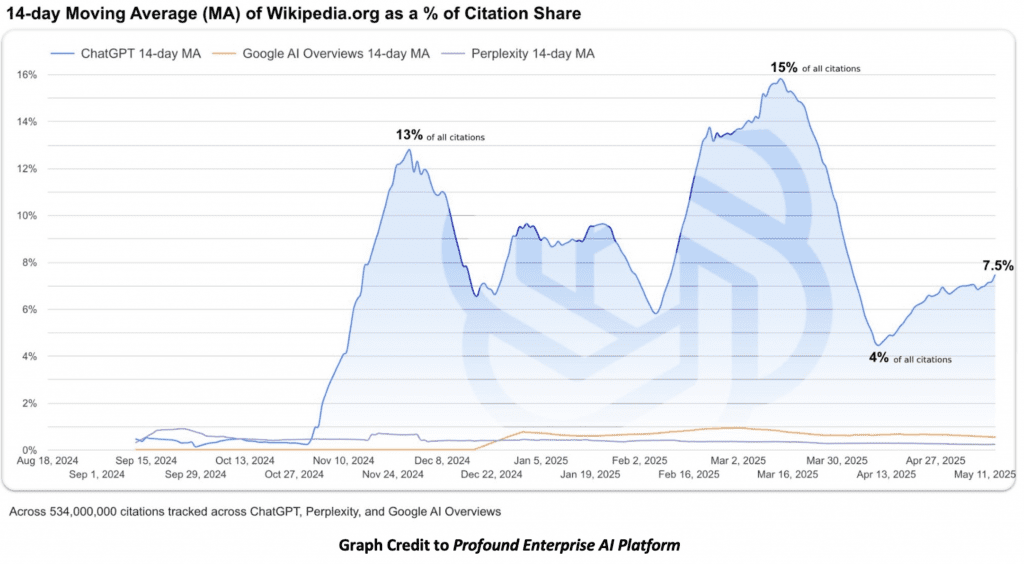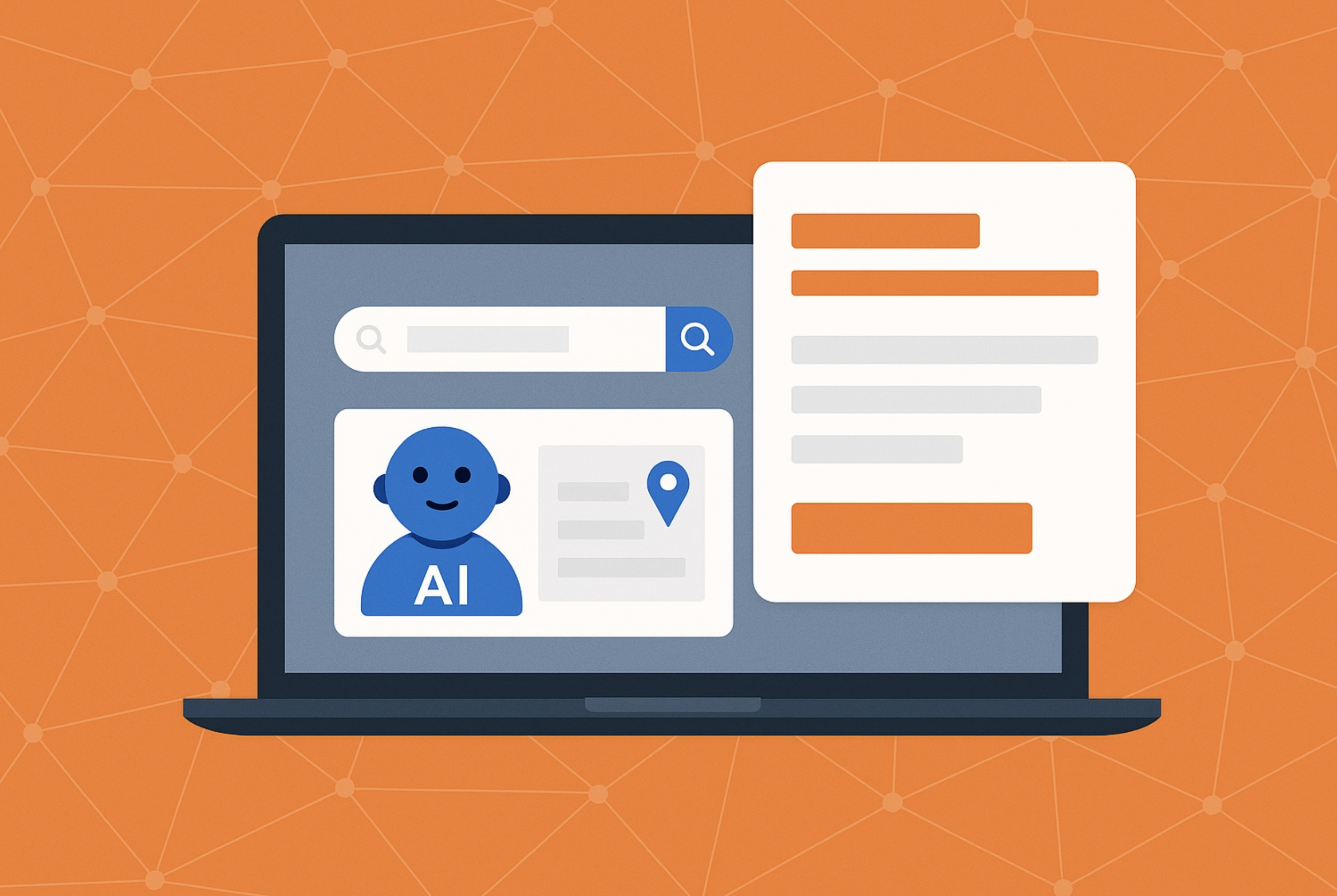By now, most marketers have mastered the basics of search engine optimization (SEO). But as AI-powered tools like ChatGPT, Bing Chat and Google’s Search Generative Experience (SGE) become the first place people go for answers, a new frontier of optimization is taking shape: AI search optimization, often called Generative Engine Optimization (GEO).
Generative Engine Optimization (GEO), sometimes called AIO or SEO for AI, is the practice of optimizing your digital presence so that Large Language Models and generative AI platforms include your business in their responses.
So what does this AI search optimization actually look like in practice? And how can your company stay ahead?
Step one: Get your entity authority in order
AI models rely on structured databases, not just your website. That means step one is making sure your brand exists, consistently and clearly, across platforms like Google Knowledge Panel, Bing, Wikidata, Crunchbase and Bloomberg. We recommend consistent naming conventions across all platforms, such as “CompanyName, California” or “CompanyName, San Francisco,” to distinguish you from similarly named entities. Think of it as digital clarity for machines.

However, even with strong consistency, brands can run into trouble if they rely too heavily on a single source. While Wikipedia is one of the most frequently cited sources by AI tools, especially ChatGPT, its influence fluctuates. Citation rates have already dropped since March and may spike again with future updates. Other platforms like Bing Chat and Google’s SGE cite it far less frequently.
That’s why brands shouldn’t put all their AI search optimization eggs in one basket. Instead of relying solely on Wikipedia, invest in consistent, accurate brand content across multiple sources. It’s the only way to maintain visibility across AI platforms, even as their sourcing behavior shifts.
Step two: Create AI-optimized content
Forget fluffy intros and clickbait titles. AI favors short, direct answers to specific questions. Your content should answer these questions in the first sentence or two, followed by detailed context. If AI truncates the rest, your message still lands.
For example, if you’re creating content about a common health concern, don’t open with a medical textbook explanation. Start with what people are searching for, such as “Symptoms of XXX” That’s the kind of direct, useful answer AI looks for.
Step three: Use structured data like a pro
AI search optimization gets technical. You’ll want to implement schema.org markup on key pages to help AI “read” your site the way a human might.
Say you’re publishing a comparison page for a software company. Adding “SoftwareApplication” markup lets AI models easily identify the product name, features, pricing and user ratings. That extra layer of structure makes your page more likely to be cited. The cleaner the structure, the clearer the citation path.
Step four: Build evergreen resources AI loves
Long, evergreen guides consistently outperform trendy content in AI citations. These are the kinds of resources AI models prioritize, especially when backed by reliable data. The more fact-based and genuinely helpful the resource, the more likely it is to be picked up by AI models when they’re asked for advice.
Step five: Third-party citations still rule
AI prioritizes third-party validation over your own blog posts. So, we help clients pursue:
- Media coverage, especially local business outlets
- Industry lists and rankings
- Expert commentary via HARO, Qwoted and journalist inquiries
This helps position your brand as a source, not just a subject.
Step six: Don’t forget branded search
Sometimes, users won’t ask AI a general question, rather they’ll ask about your company. That’s called a branded query: “What does [Your Company Name] do?” or “Where is [Your Company] headquartered?”
To ensure AI tools have accurate, compelling answers, we recommend building a centralized “[Company Name] at a Glance” page. This page should include:
- Founding year and headquarters
- Leadership team and company structure
- Key products or specializations
- Recent awards and press coverage
- Community involvement or mission
Think of it as your brand’s AI cheat sheet; something structured, authoritative and easy for language models to parse and cite.
GEO isn’t replacing SEO, but it’s layering on top of it. And if you want to be cited by AI and not just searched by humans, now’s the time to optimize. Here at Bospar, we specialize in strategies designed to ensure your brand surfaces in AI responses. Our GEO and Answer Engine Optimization (AEO) approach combines advanced PR, content strategy and technical expertise to position your company as an authoritative, AI-preferred source.




